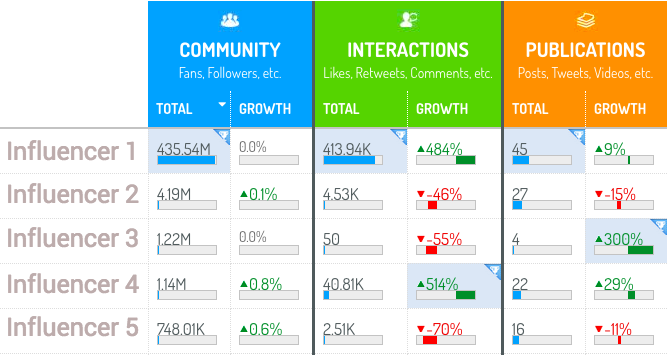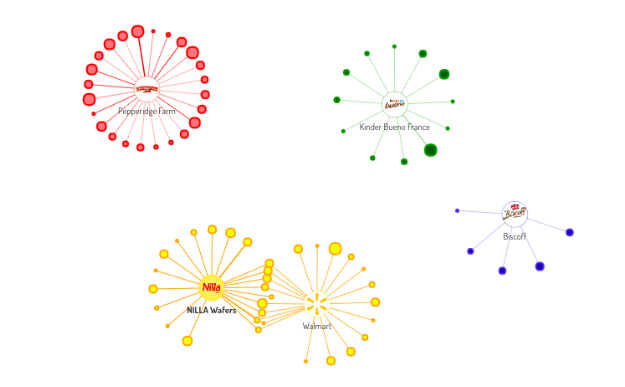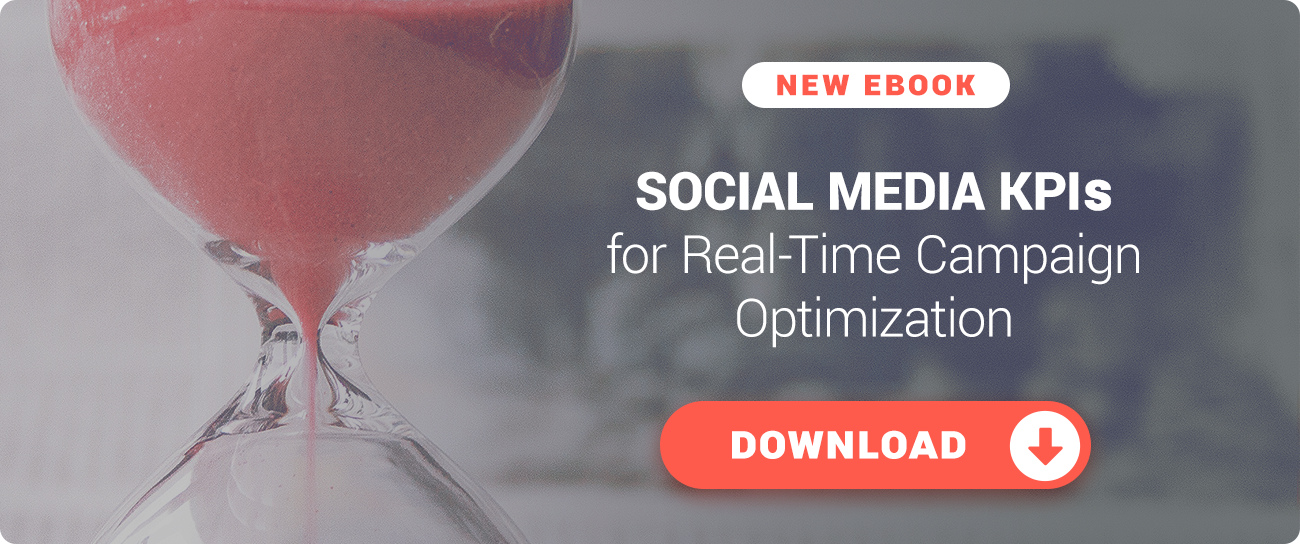The Guide to Instagram Influencer Marketing: 4 Benchmarking Tips for Marketers
The Daniel Wellington brand sure has a lot to be proud of. The mid-range watch has grown from a relatively unknown brand, to a sought after wearable that has made its way onto the wrists of celebrities like Kendall Jenner - all while amassing 3 million followers on social media, and $207 million in revenue in 2017.
The secret to building an online cult following? Instagram influencer marketing.
If you are a social media marketer for a B2C brand, chances are you have considered tapping into the power and clout of these Instagram influencers. After all, who else understands this platform and its 800 million users better than these visual storytellers? But before you rush into your next Instagram influencer marketing campaign, it is important to benchmark and identify the most effective and relevant influencers for your brand.
Typically, an Instagram influencer benchmarking exercise serves two purposes:
- Audit each influencer engaged for your campaign
- Analyze their impact on your campaign KPI
Here are four simple ways to benchmark your Instagram influencer marketing campaign!
1. Benchmarking your Instagram Influencer’s Authenticity and Engagements
While it’s easy to get caught up in a sea of likes and enthusiastic comments like “Wow!” and “OMG!”, don’t be fooled.
In 2014, Instagram purged millions of ghost accounts, costing celebrities and influencers alike a considerable percentage of their followers base. Buying ghost followers, automating bot accounts, and exchanging likes and comments with other users, are common tactics Instagram content creators also resort to, to inflate their follower numbers and engagement rates. Marketers need to identify the bona fide influencers even before approaching them and dedicating precious marketing budgets to their influencer marketing campaigns.
To weed out who’s truly influential from the… superficially influential, look at:
-
- Engagement rate: Organic engagement rates on Instagram range from 2 - 10%. For example, an influencer with 20,000 followers, should have an average of 400 - 2,000 likes on their posts. Anything less is a sign of a lack of significant, authentic engagement.

- Instagram Stories: A truly engaged audience actively views all your content; high viewer and interaction counts on Instagram Stories, are signs of an engaged and active online community. Similar to post engagements, these should number at 2 - 10% of the influencer’s followers count.
- Post comments: Automated accounts, or users exchanging engagements, typically use generic, one worded comments like “OMG!” and “Wow!” when engaging with an influencer’s content. A truly engaging post would attract a variety of comments from followers. You may want to use a social listening tool to automatically detect common words used on an influencer’s posts.
- Engagement rate: Organic engagement rates on Instagram range from 2 - 10%. For example, an influencer with 20,000 followers, should have an average of 400 - 2,000 likes on their posts. Anything less is a sign of a lack of significant, authentic engagement.
2. How Relevant is your Instagram Influencer?
A car brand, for one, would not engage a beauty blogger, unless they wanted to reach a very specific audience for their product and campaign.
To determine an influencer’s relevance, consider his or her:
- Follower demographics: What age group, gender, and country are majority of the influencer’s from? What are their main interests?
- Relation to the brand or product promoted: What is the influencer’s niche or area of expertise? Has the influencer engaged in any brand related discussions recently?
 An influencer network chart, showing how various international biscuit brands are discussed online. Here, it is shown that NILLA Wafers and Walmart are closely linked. The smaller circles represent various influencers who have engaged with or actively discussed the brands.
An influencer network chart, showing how various international biscuit brands are discussed online. Here, it is shown that NILLA Wafers and Walmart are closely linked. The smaller circles represent various influencers who have engaged with or actively discussed the brands.
3. Analyzing your Instagram Influencer’s Impact on Campaign KPIs
Once your campaign is up and running, you may want to benchmark each influencer’s impact on your objectives in real time, so you can recalibrate strategies if necessary. To do this, it is important to define a set of campaign KPIs to benchmark them against, such as reach and sales earned from each influencer.
Reach KPIs include:
- Posts published: How many posts did each influencer contribute to your campaign?
- Audience reached: How many impressions did your campaign earn through each influencer? What is the age group, gender, and geolocation of audiences reached?
- New customers, followers, or sign-ups acquired: Attribute the growth in customers or followers to each influencer, by using a unique tracking link or sign up code.
Engagement KPIs include:
- Volume of discussions generated: Out of the total number of earned media that was generated during the campaign, how much was from influencers, and how much user generated content or discussions did your influencers spark? Pro tip: Use a social media listening tool to automatically tag discussions from influencers or followers and customers, to track their share of voice in real time.
- Quality of engagements: Compare the number of comments that are genuinely interacting with the brand or showing interest, versus the numbers of comments that are solely about the influencer or spam.
Sales KPIs include:
- How much sales did each influencer generate for your campaign? Use a unique tracking link or discount code to attribute sales to each influencer.
Bonus: Get the lowdown on all the essential metrics you’ll need to track and optimize your campaigns in real time.

It’s essential to keep ahead of the competition at all times, Instagram influencer marketing campaigns included. You may want to look at:
- How your competitors are using Instagram influencers for their marketing campaigns
- Results: What is the online share of voice and sentiment earned by your competitor during their influencer marketing campaign?
At the same time, you can weed out the influencers that have already been engaged by your competitors, to retain the integrity of your brand and campaign.
In Summary
While Instagram influencers - and influencer marketing in general - may have been on the receiving end of criticism and skepticism at the value they can bring to a brand, and how truly authentic they are given the gamified nature of social media, that’s not to say influencers are entirely ineffective for B2C brands. With the right metrics, KPIs, and benchmarking processes put in place, marketers can identify the most suitable influencer for their next outreach or sales campaign, and assess the impact brought on company objectives.
Find out how you can identify the right influencer for your campaign, achieve your objectives, and much more with social media intelligence! Book a free one-on-one with our social listening experts.
Written by Melissa Chue
Melissa is a digital advocate who loves diving into the latest trends in digital and social media. Since joining Digimind’s marketing team in 2015, she has written studies for over 15 industries in Asia Pacific. When she is not telling stories about data, Melissa can be found exploring her favourite cafes and hangouts on Instagram @chuepachups.
.png?width=100&name=logo%20(1).png)


